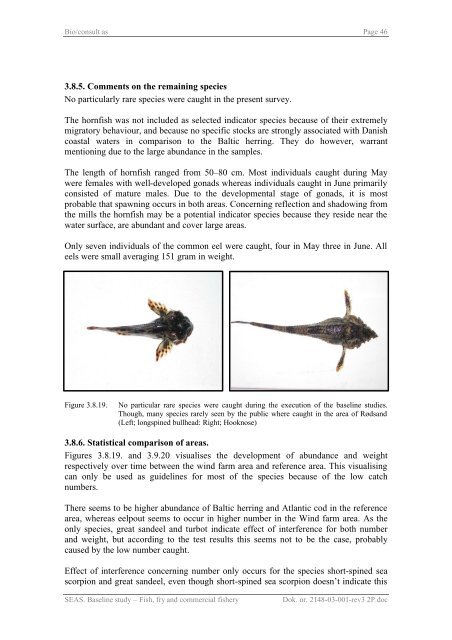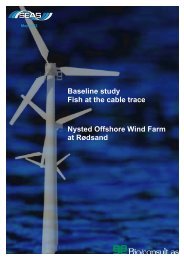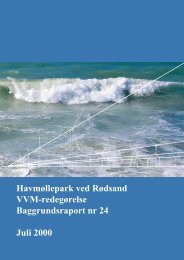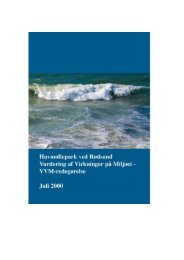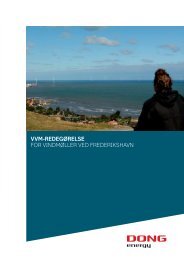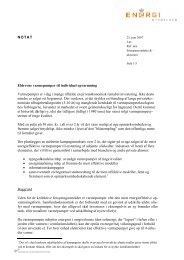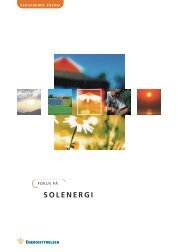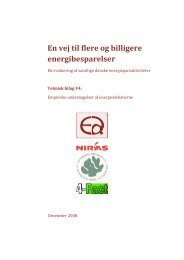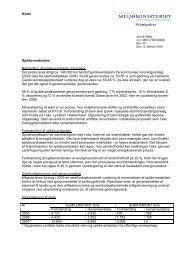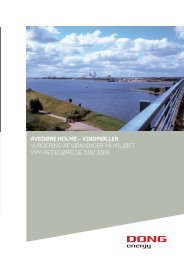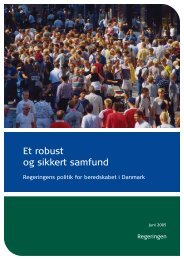Baseline study Fish, fry and commercial fishery Nysted Offshore ...
Baseline study Fish, fry and commercial fishery Nysted Offshore ...
Baseline study Fish, fry and commercial fishery Nysted Offshore ...
You also want an ePaper? Increase the reach of your titles
YUMPU automatically turns print PDFs into web optimized ePapers that Google loves.
Bio/consult as Page 46<br />
3.8.5. Comments on the remaining species<br />
No particularly rare species were caught in the present survey.<br />
The hornfish was not included as selected indicator species because of their extremely<br />
migratory behaviour, <strong>and</strong> because no specific stocks are strongly associated with Danish<br />
coastal waters in comparison to the Baltic herring. They do however, warrant<br />
mentioning due to the large abundance in the samples.<br />
The length of hornfish ranged from 50–80 cm. Most individuals caught during May<br />
were females with well-developed gonads whereas individuals caught in June primarily<br />
consisted of mature males. Due to the developmental stage of gonads, it is most<br />
probable that spawning occurs in both areas. Concerning reflection <strong>and</strong> shadowing from<br />
the mills the hornfish may be a potential indicator species because they reside near the<br />
water surface, are abundant <strong>and</strong> cover large areas.<br />
Only seven individuals of the common eel were caught, four in May three in June. All<br />
eels were small averaging 151 gram in weight.<br />
Figure 3.8.19. No particular rare species were caught during the execution of the baseline studies.<br />
Though, many species rarely seen by the public where caught in the area of Røds<strong>and</strong><br />
(Left; longspined bullhead: Right; Hooknose)<br />
3.8.6. Statistical comparison of areas.<br />
Figures 3.8.19. <strong>and</strong> 3.9.20 visualises the development of abundance <strong>and</strong> weight<br />
respectively over time between the wind farm area <strong>and</strong> reference area. This visualising<br />
can only be used as guidelines for most of the species because of the low catch<br />
numbers.<br />
There seems to be higher abundance of Baltic herring <strong>and</strong> Atlantic cod in the reference<br />
area, whereas eelpout seems to occur in higher number in the Wind farm area. As the<br />
only species, great s<strong>and</strong>eel <strong>and</strong> turbot indicate effect of interference for both number<br />
<strong>and</strong> weight, but according to the test results this seems not to be the case, probably<br />
caused by the low number caught.<br />
Effect of interference concerning number only occurs for the species short-spined sea<br />
scorpion <strong>and</strong> great s<strong>and</strong>eel, even though short-spined sea scorpion doesn’t indicate this<br />
SEAS. <strong>Baseline</strong> <strong>study</strong> – <strong>Fish</strong>, <strong>fry</strong> <strong>and</strong> <strong>commercial</strong> <strong>fishery</strong> Dok. nr. 2148-03-001-rev3 2P.doc


